Before tumble dryers entered the picture, the humble clothespin had its day in the sun.
Of course, doing the laundry goes back centuries. In the earliest of times wash was done in nearby rivers or streams, or in a tub with water hauled from a well or spring. In those days, wash was dried in the sun on rocks or bushes, or laid over a clothesline. A fair target to be blown away by the wind.
“Pegs” appeared first in Britain and then were brought to the colonies in the early 1700s. They were carved from tree branches, usually hickory, willow or ash. Once the bark was removed, the green branch piece would be split up the middle and then put over a thin stick to dry overnight into a peg. Some were rounded at the top into a knob. Others had a tin strip wrapped around the top. There were faults with the design. The pegs had to be pushed down far onto the clothesline to hold a garment. Consequently, sometimes the pegs split apart.
It wasn’t until 1832, when Samuel Pryor of Salem, NJ received the first US patent for a clothespin. Unfortunately, his clothespin model was destroyed in a fire at the US Patent Office. The design was more along the lines of a peg with a wide split in the middle and a knob at the top.
David M. Smith of Vermont is credited with the first clip clothes pin. His patent approved in 1853, became the hallmark design for an industry.
Smith’s design was an improvement of the peg. It added a wire spring between the two pieces of wood. As Smith explained in his application, pushing the two upper pieces together, the two lower pieces would spread apart “so that the instrument can be safely placed on the article of clothing hanging on the line. This done the pressure of the fingers is to be removed so as to permit the reaction of the spring to throw the inferior legs together and cause them to simply grasp the piece of clothing and the line between them.”
The concept caught on. From 1853 to 1887, 146 patents were issued for clothespins. Many were improvements on Smith’s original patent.
In 1887, Solon F. Moore, also from Vermont, applied for a patent with a coiled spring or fulcrum. Moore described it as “an improved article of manufacture…two clamps having the fulcrum-recess on their inner sides about midway their length…the spring composed of a single wire coiled… and tangential arms at the opposite ends of the coil, with angular branches at their outer ends, to engage the sides of the clamps and prevent lateral displacement thereof.”
Complicated description; however, anyone who has tried to put the two halves of a clothespin back together understands the importance of those angular arms!
This small design improvement set the stage. In 1887, The United States Clothespin Company was started in Montpelier, VT, producing wooden clothespins of Moore’s design. What followed was a competitive industry. At one time 15 companies, in Vermont alone, were making clothespins. The availability of lumber, waterpower and the advancement of railway lines into Vermont, helped the growth of clothespin mills.
In 1909, Allan Moore (no relation to Solon) started the National Clothespin Company across the street from The United States Company. The National Clothespin Company used a new manufacturing design that was a less expensive way to make the spring fulcrum. By 1918, The National Clothespin Company was the industry leader.
The United States Clothespin Company closed in the 1940s. The Penley's Clothespin Factory in West Paris, Maine begun in the 1940’s, closed in 2002.
Moore’s National Clothespin Company, the last U.S. company to produce clothespins, closed in 2009. A victim of global competition and tumble dryers. The 1918 factory building in Montpelier, VT is on the National Register of Historic Places.
But, the clothespin lives on, in craft projects and as art.
Claes Oldenburg, (born in Sweden in 1929 ) is an American Pop Art sculptor known for his large-sized sculptures. His sculptures are inspired by familiar objects. Since 1969, over 25 large-scaled art projects have been produced by Oldenburg and installed in major cities across the US and Europe. As part of the Philadelphia Museum of Art’s Object in Monument exhibition in 1974, Oldenburg was commissioned to create a Large-scale project.
The result was the 45-foot-high Clothespin.
What memories of clothespins do you have?
Thank you for reading!
Resource websites:
New York Times May 5 2013 magazine
Powers, Mathew. "National Clothespin Factory." Clio: Your Guide to History. August 23, 2019. https://www.theclio.com/entry/84920





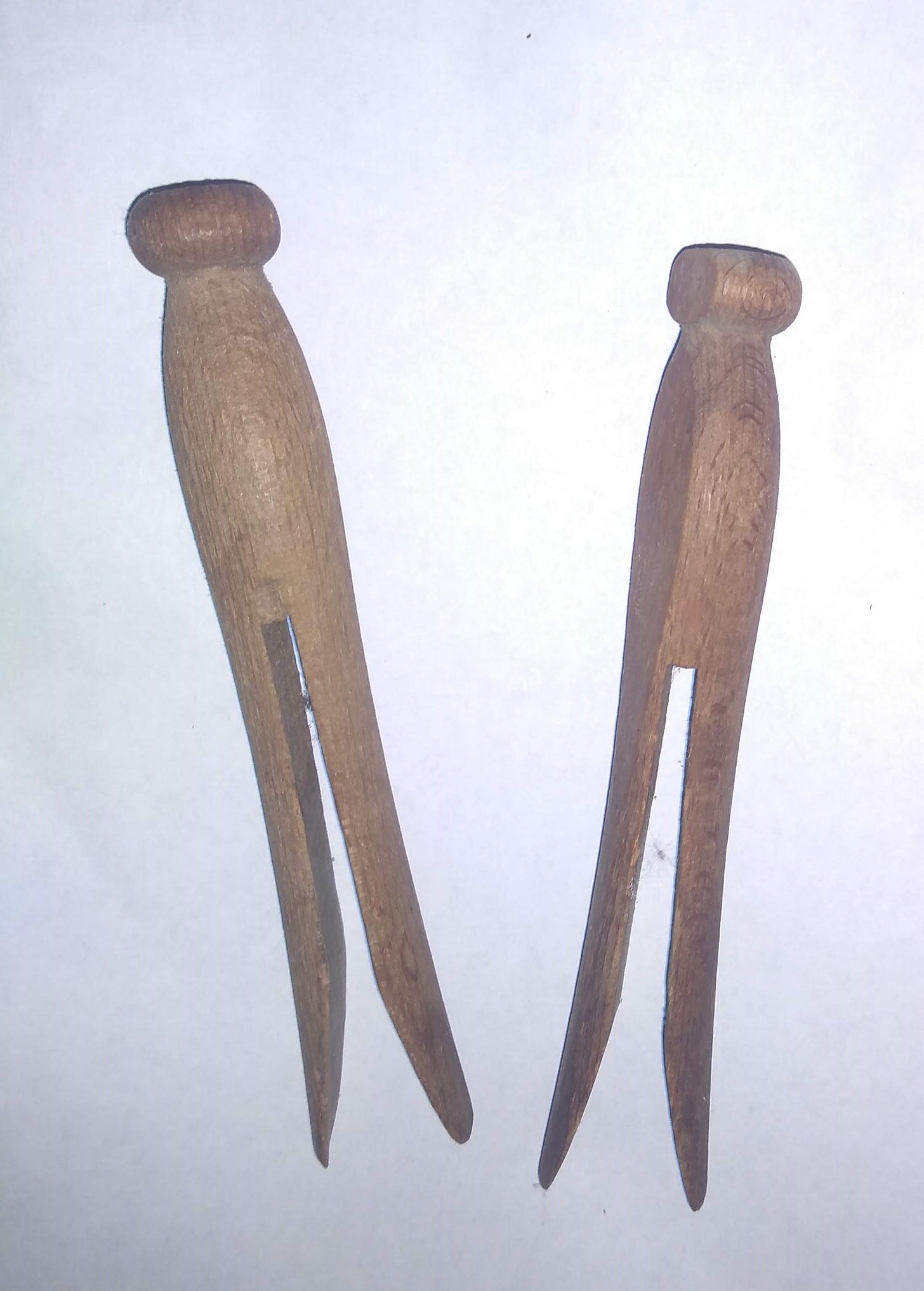
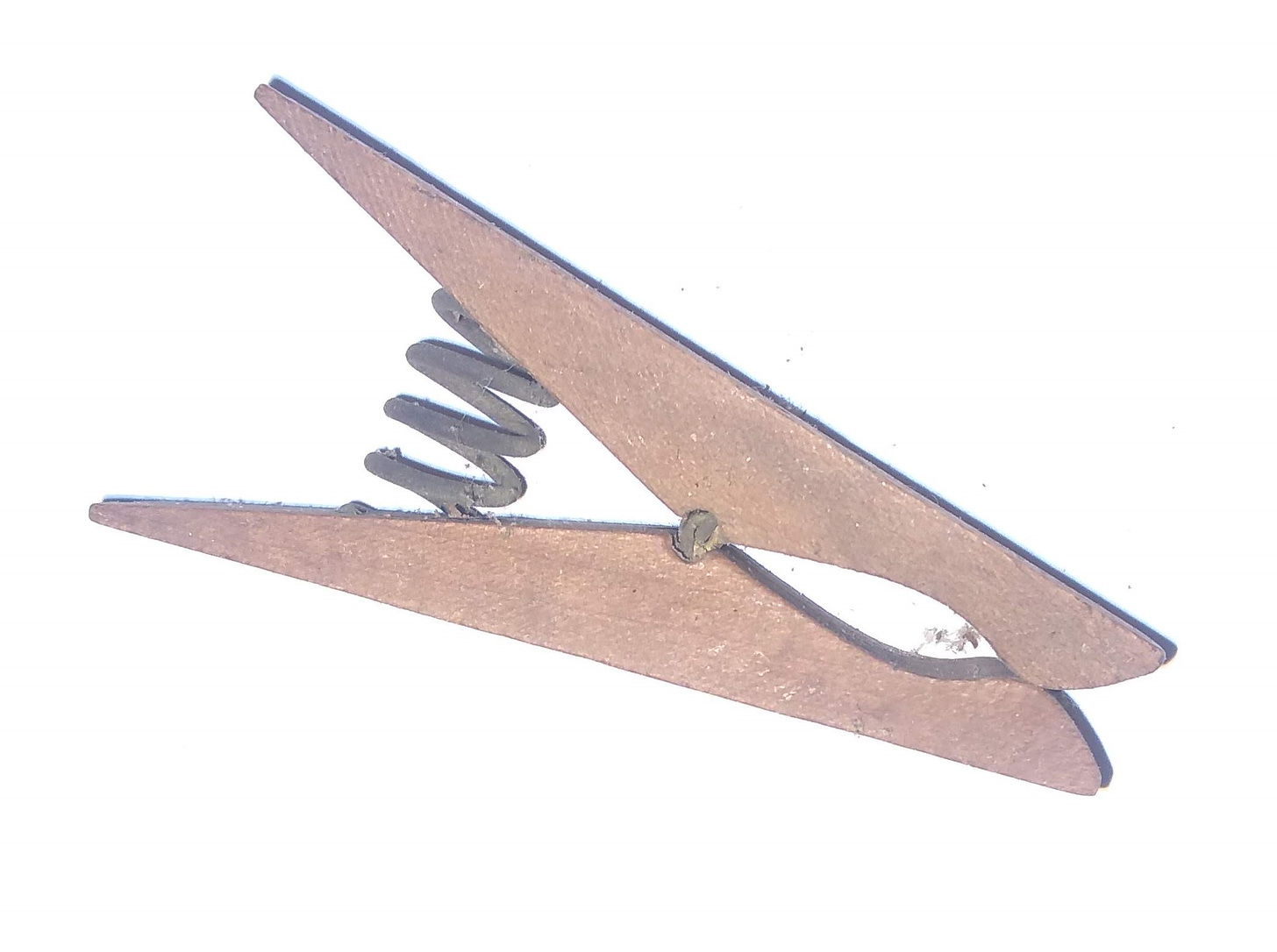
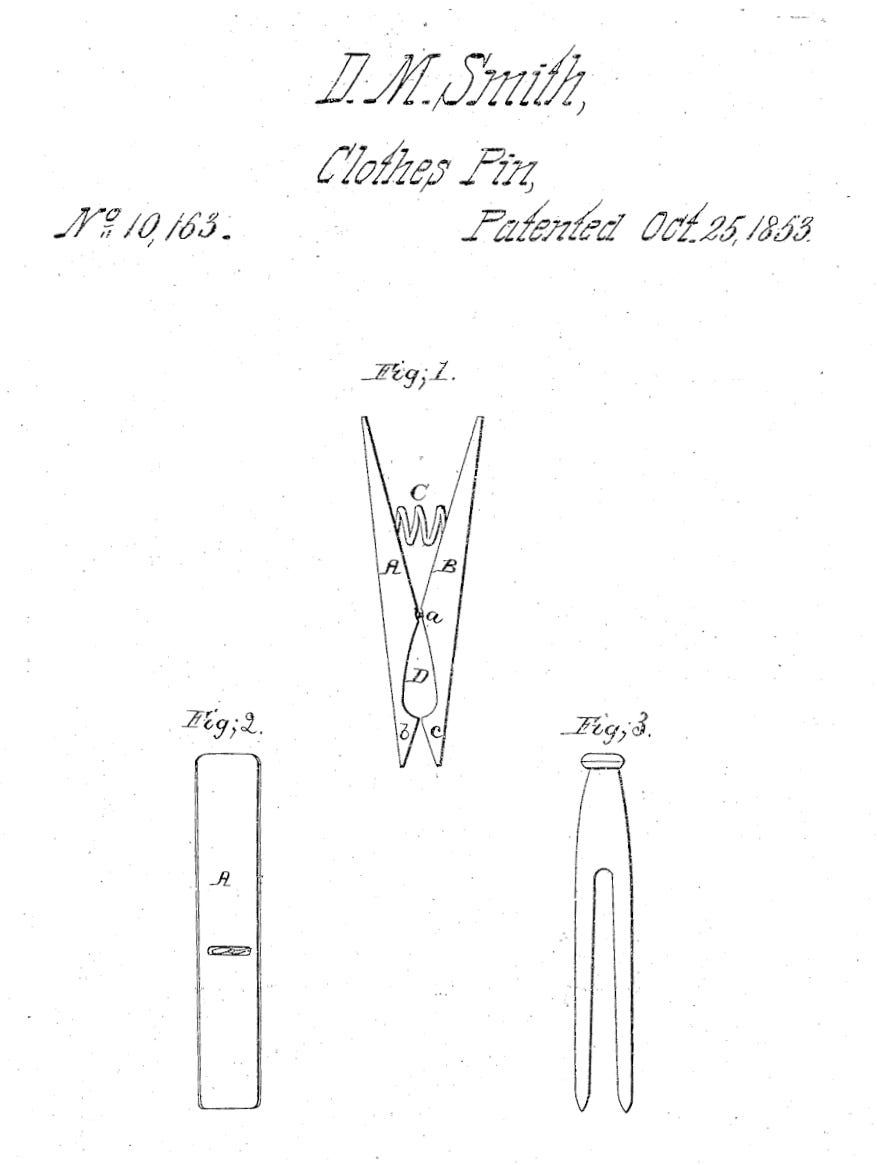
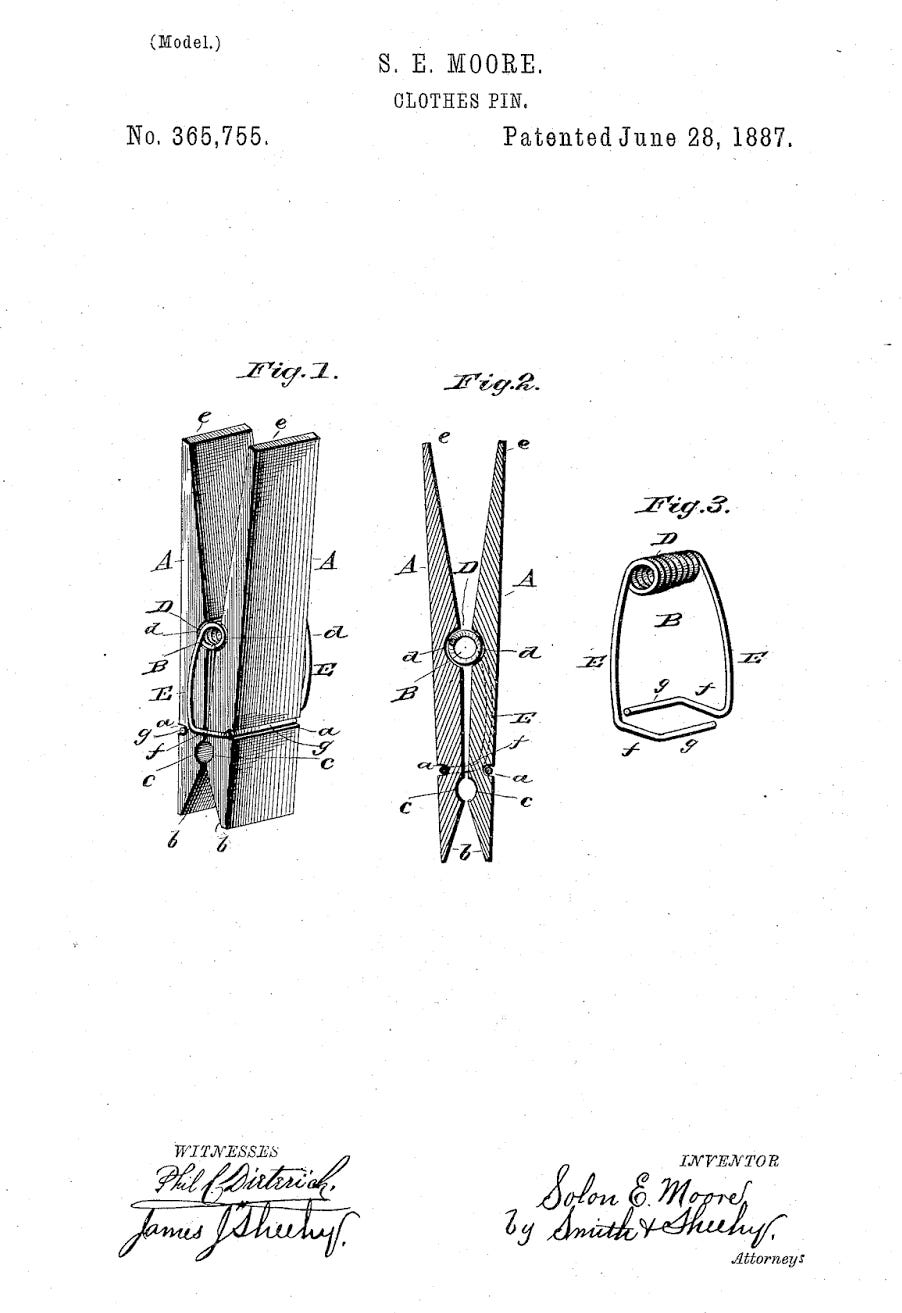
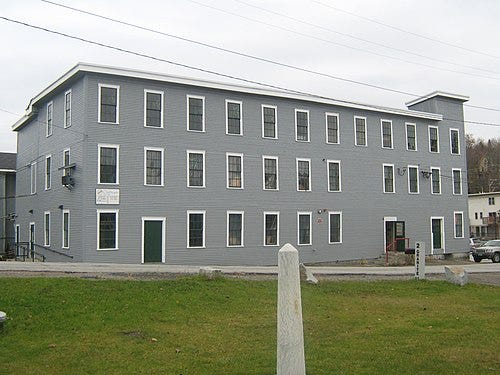
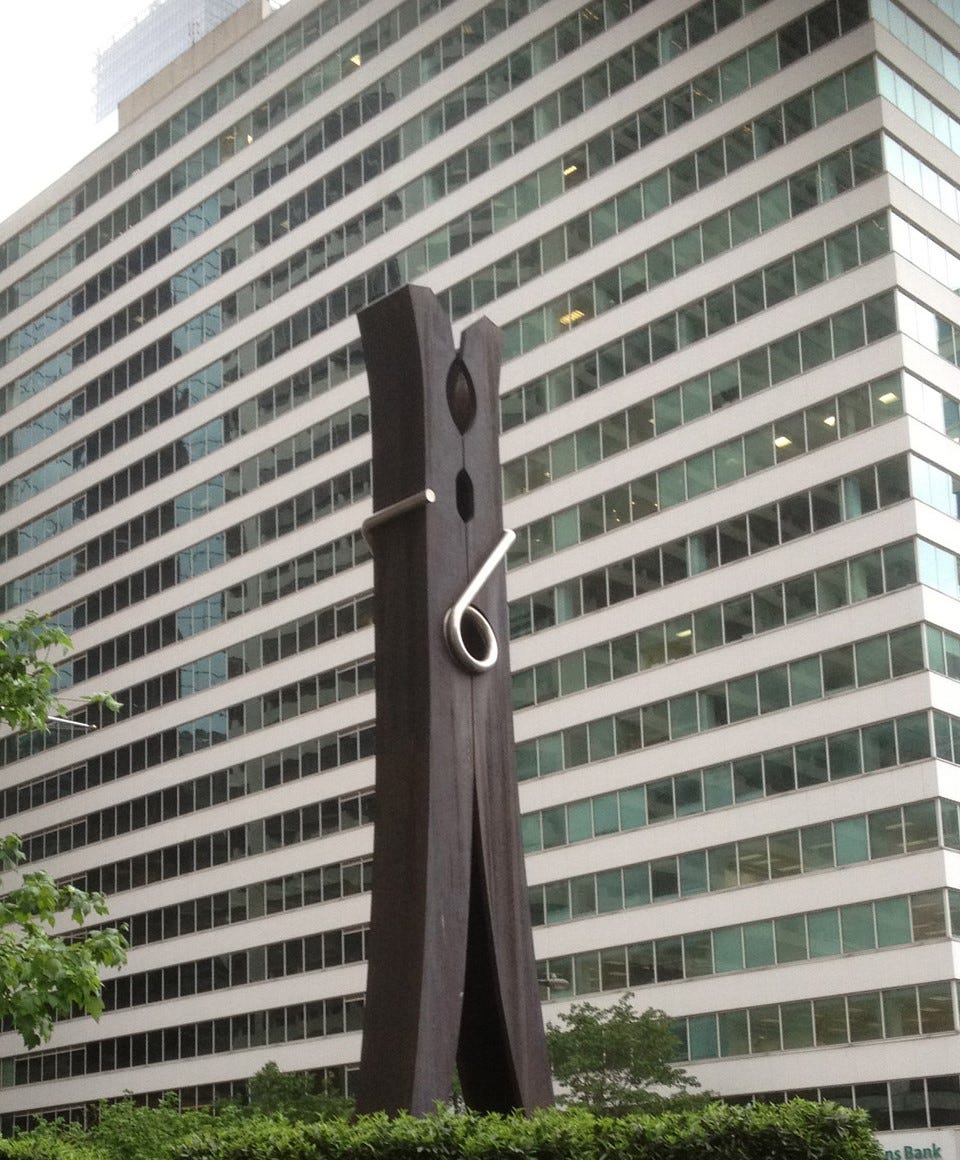
I've heard of clothespins being use in range of motion physical therapy for people recovering from shoulder surgery. Clip a clothespin to the base of a yardstick and then unclip it and move it up 1". Keep going until you reach the top, or as far as your shoulder can go. Sounds like a tortuous (but effective) use of clothespins!
Like everyone else in the 40s and 50s we had a clothes line and my job was to ensure that we always had a good supply of clothes pins. We kids also used them to attach baseball cards to the wheels of our bikes so that we could have way cool and loud whirring sounds when we pedaled around town.